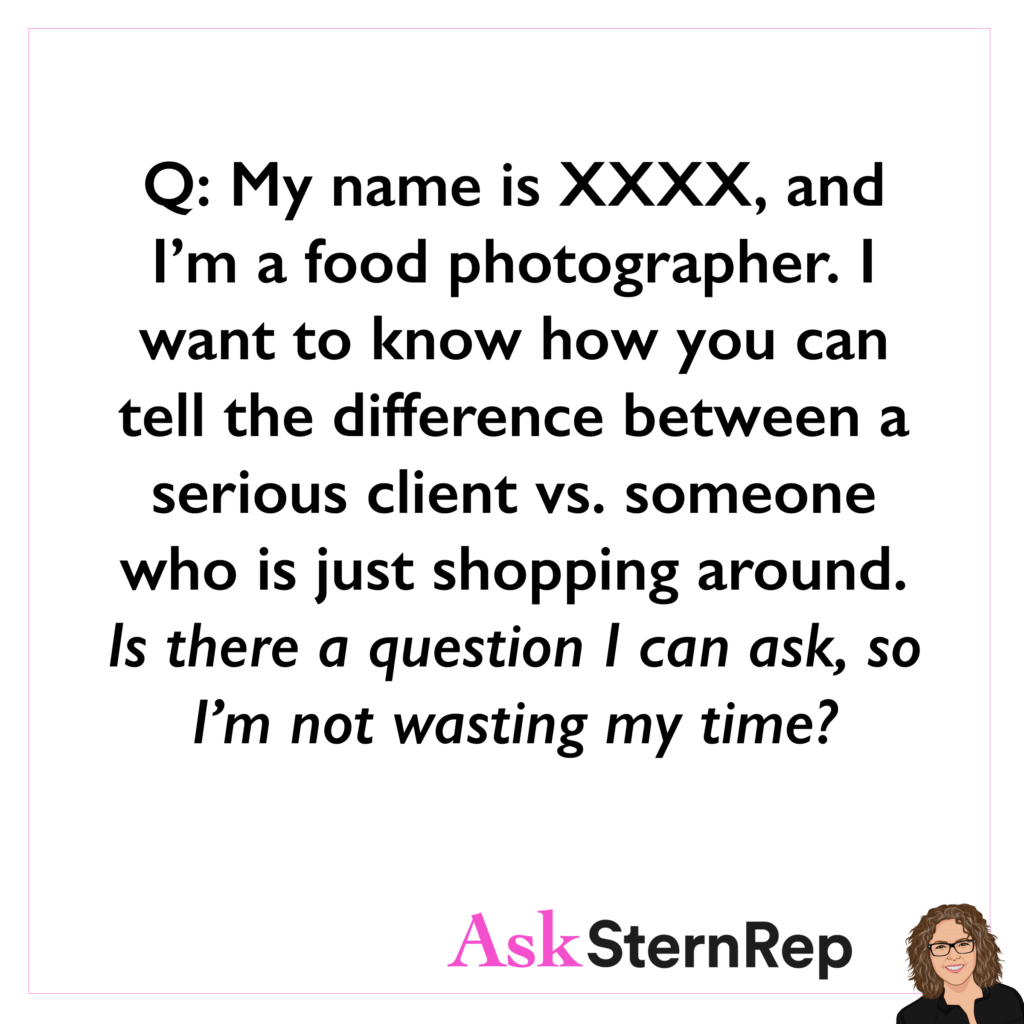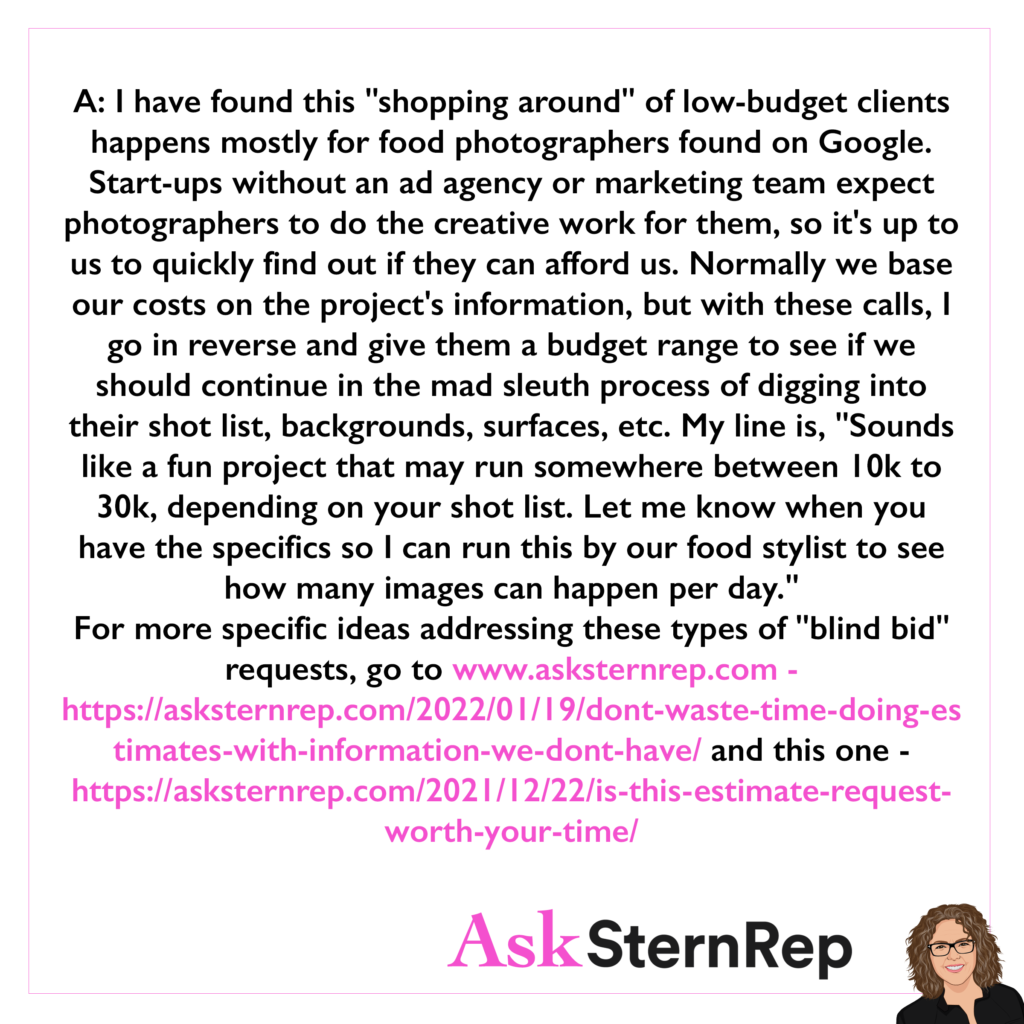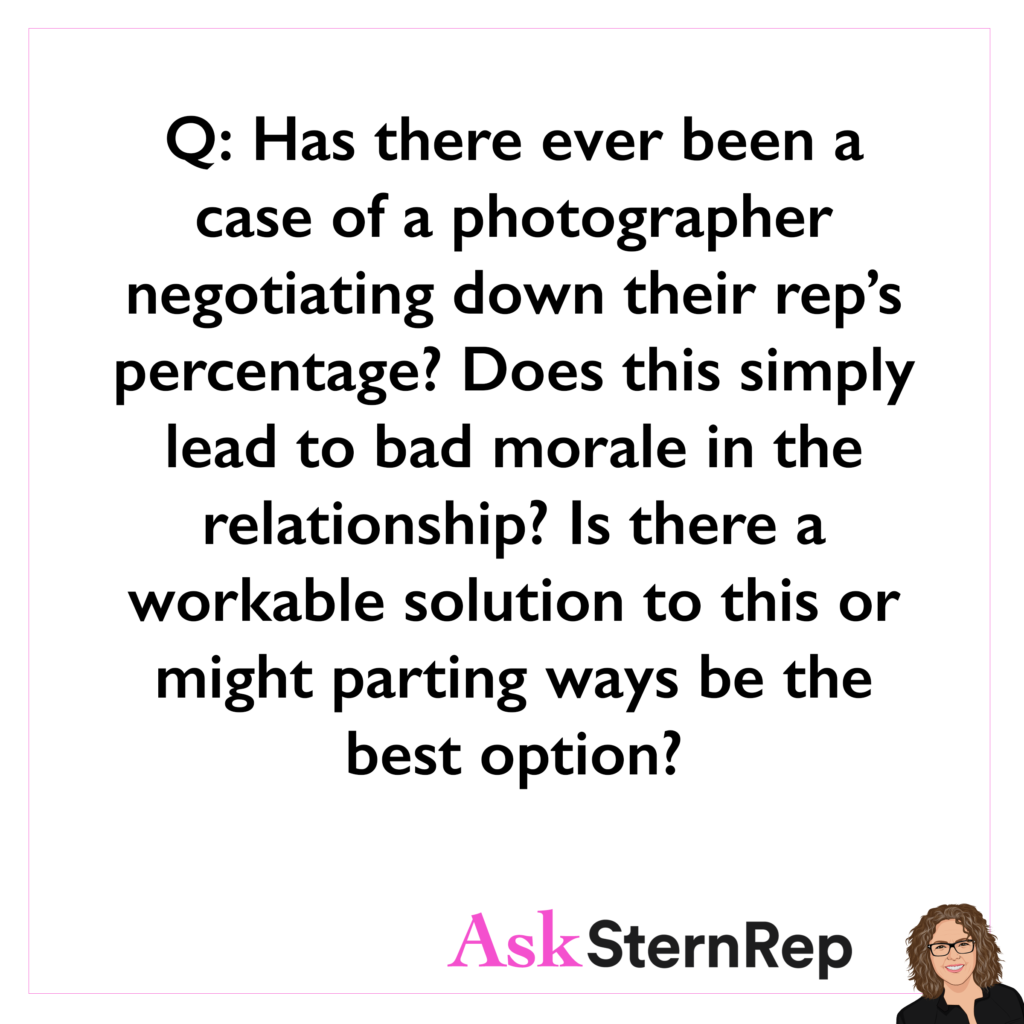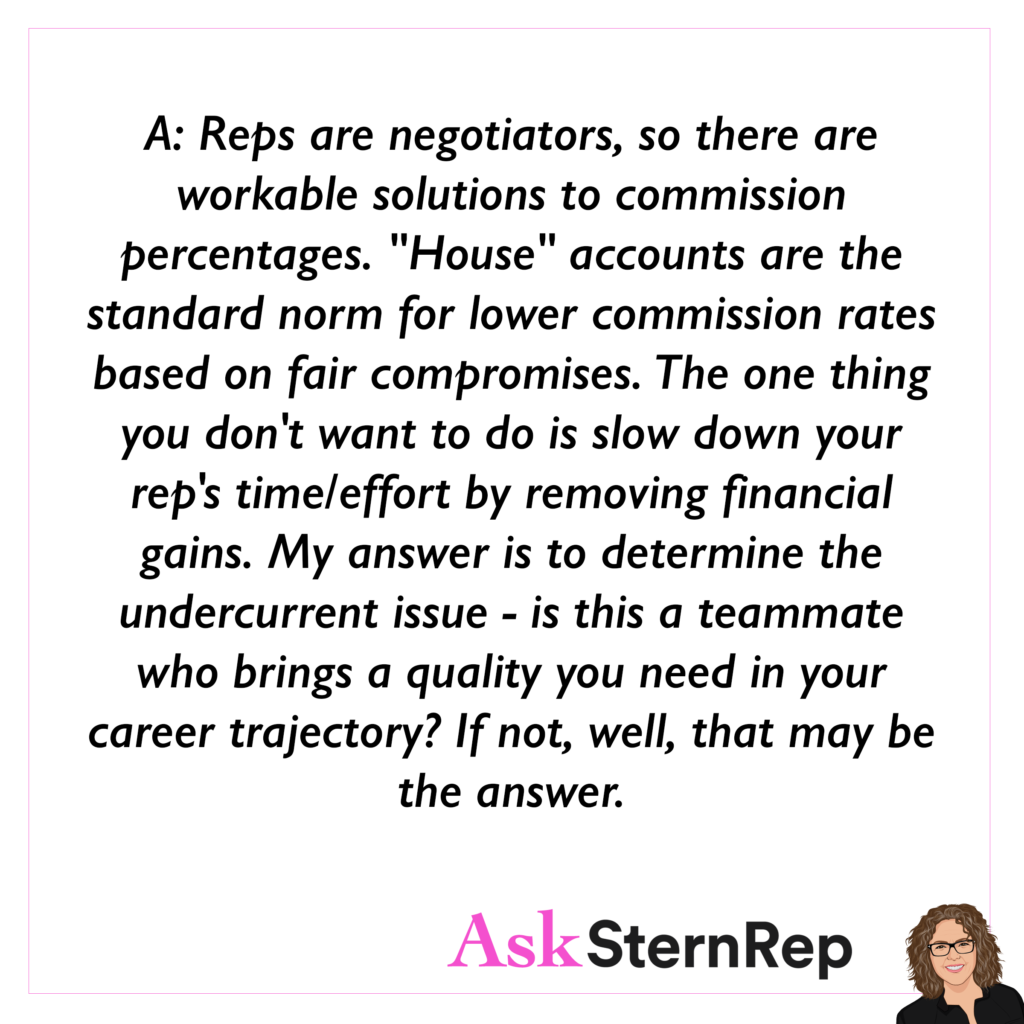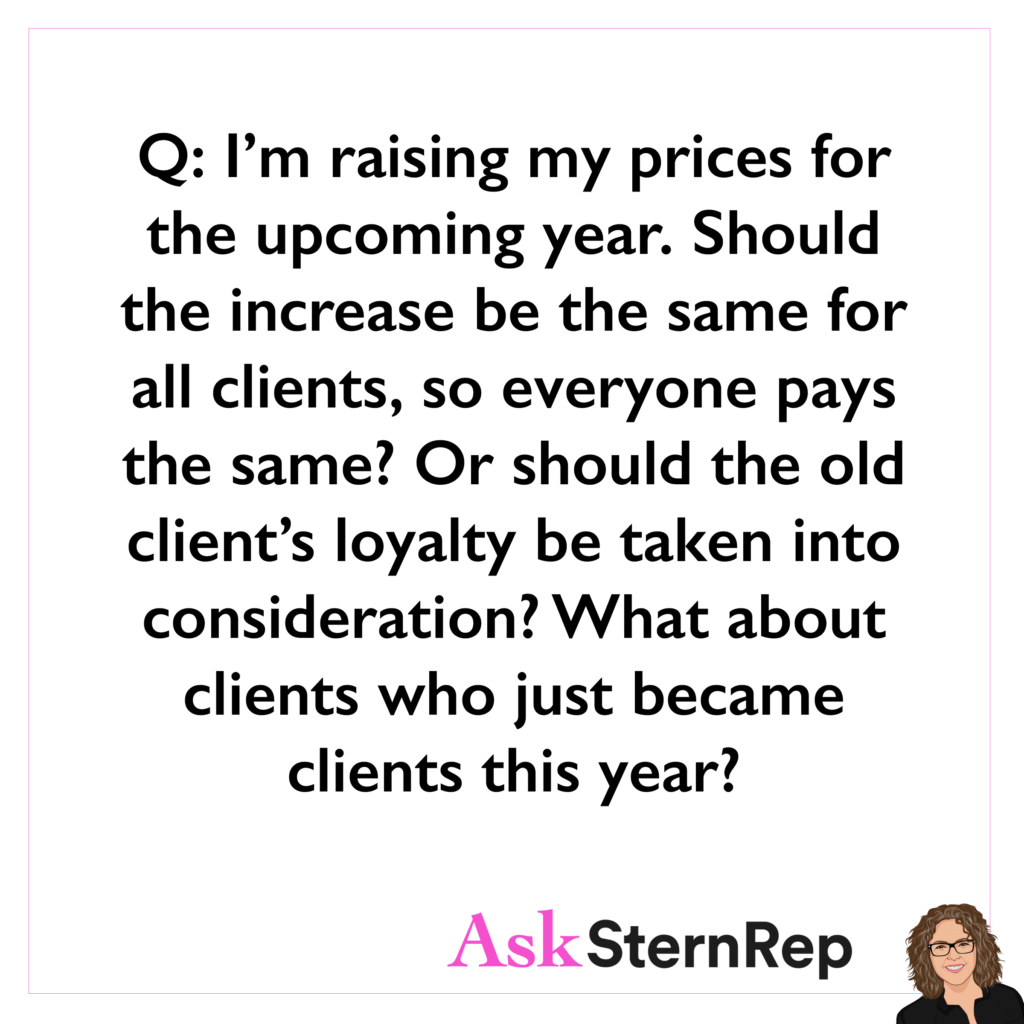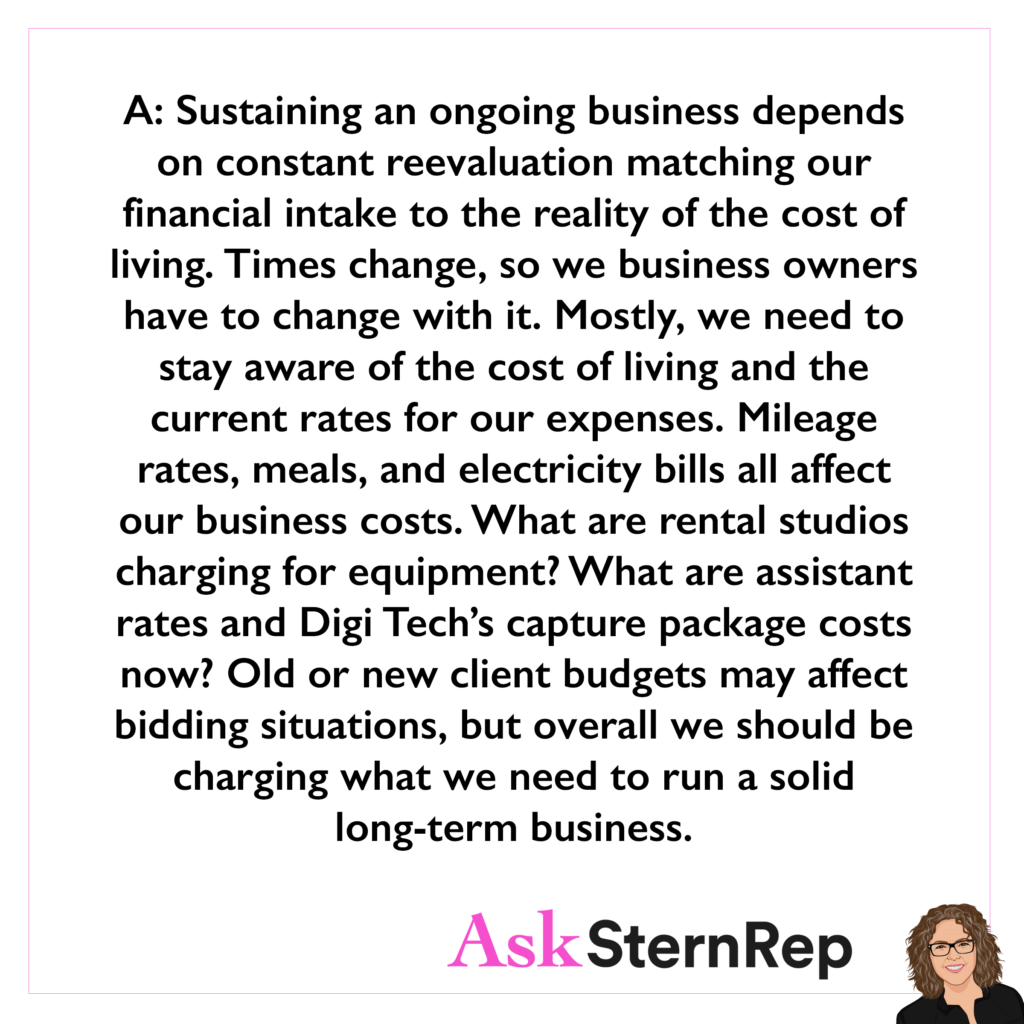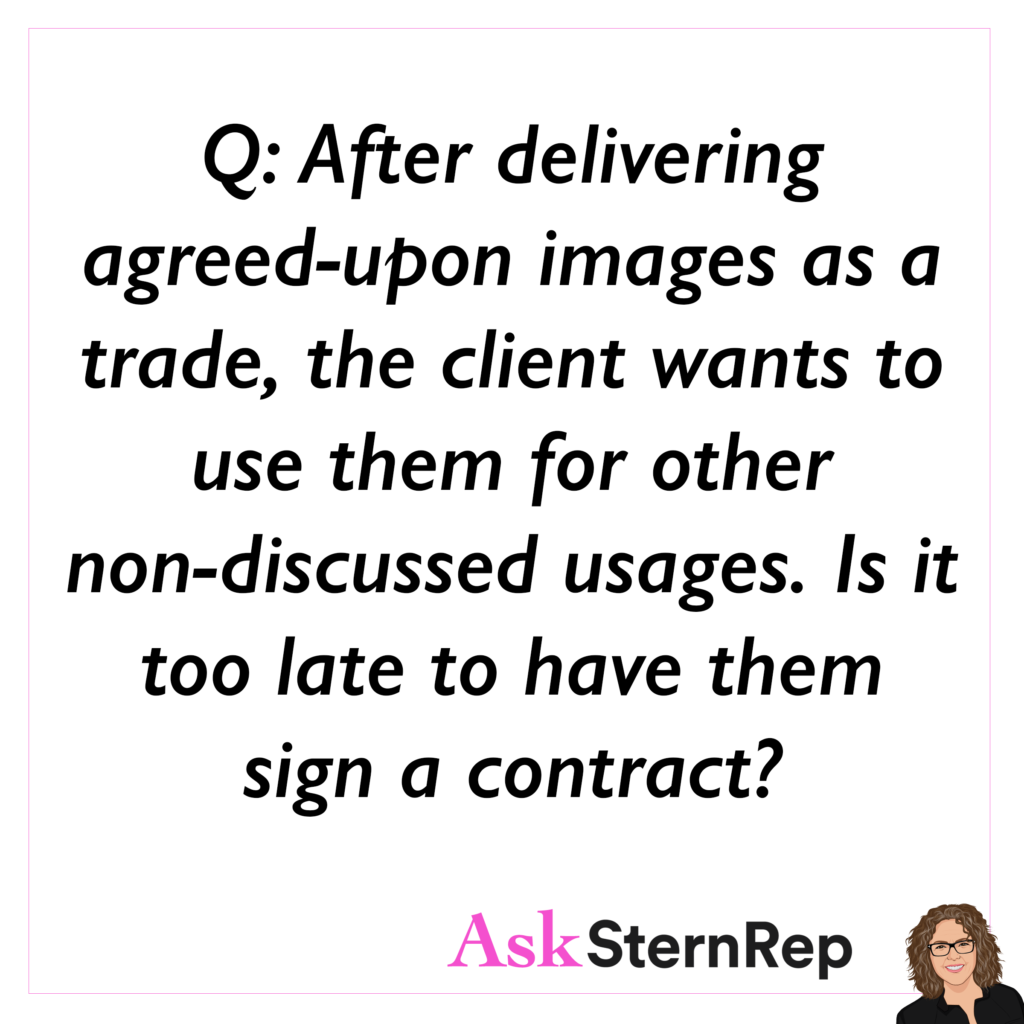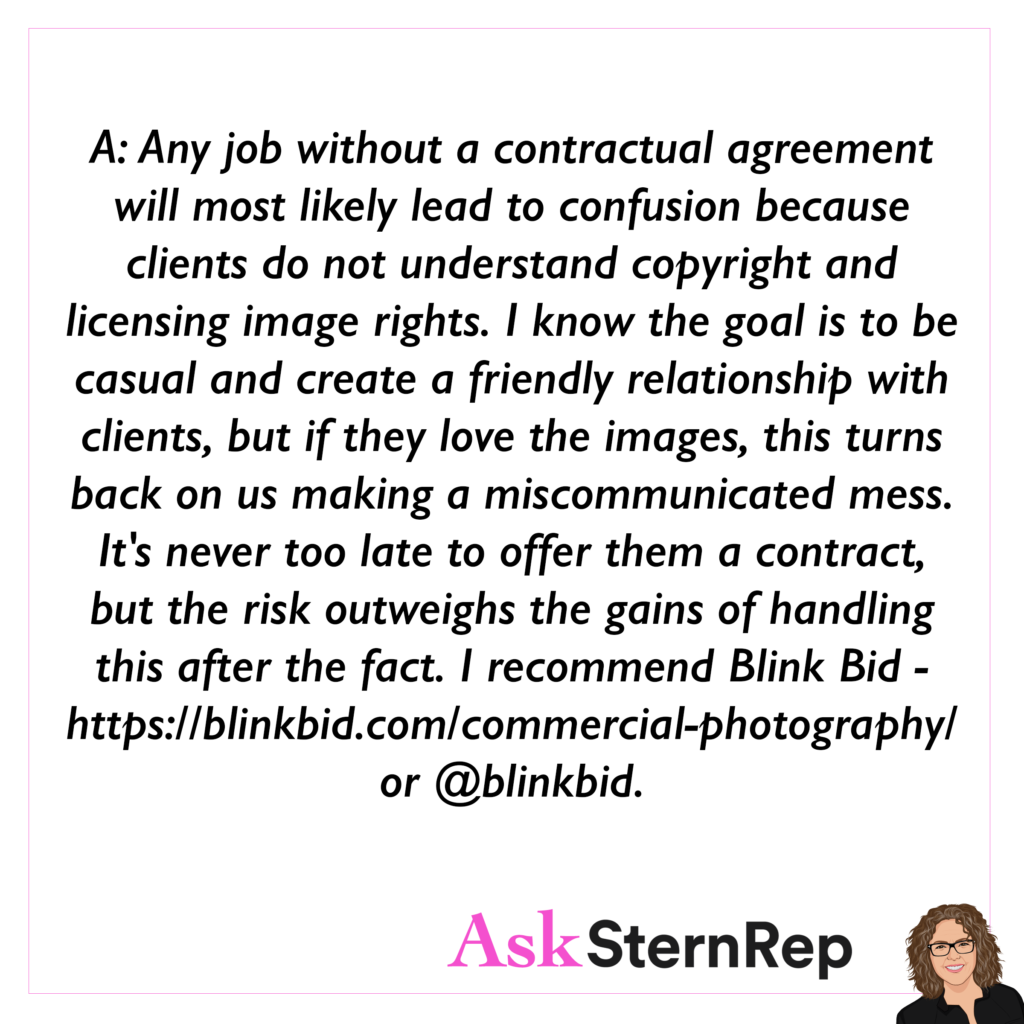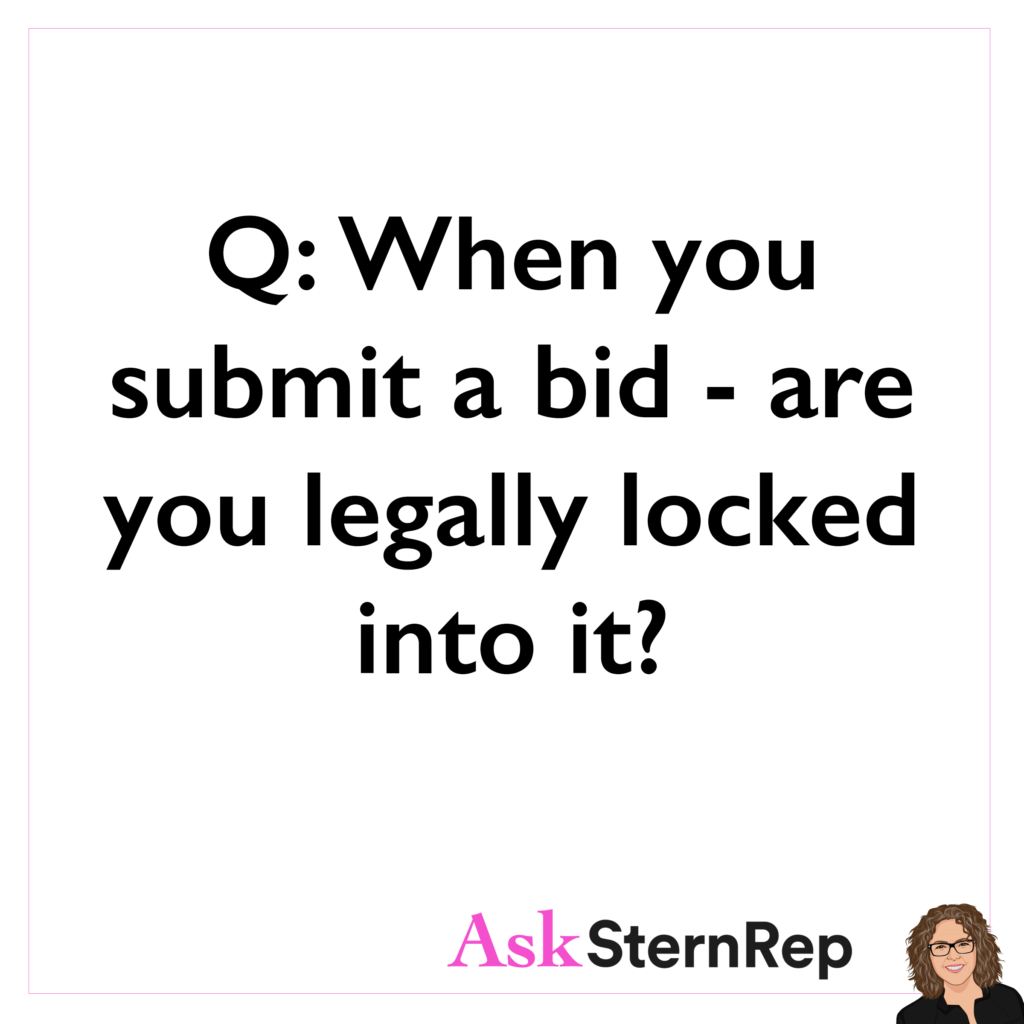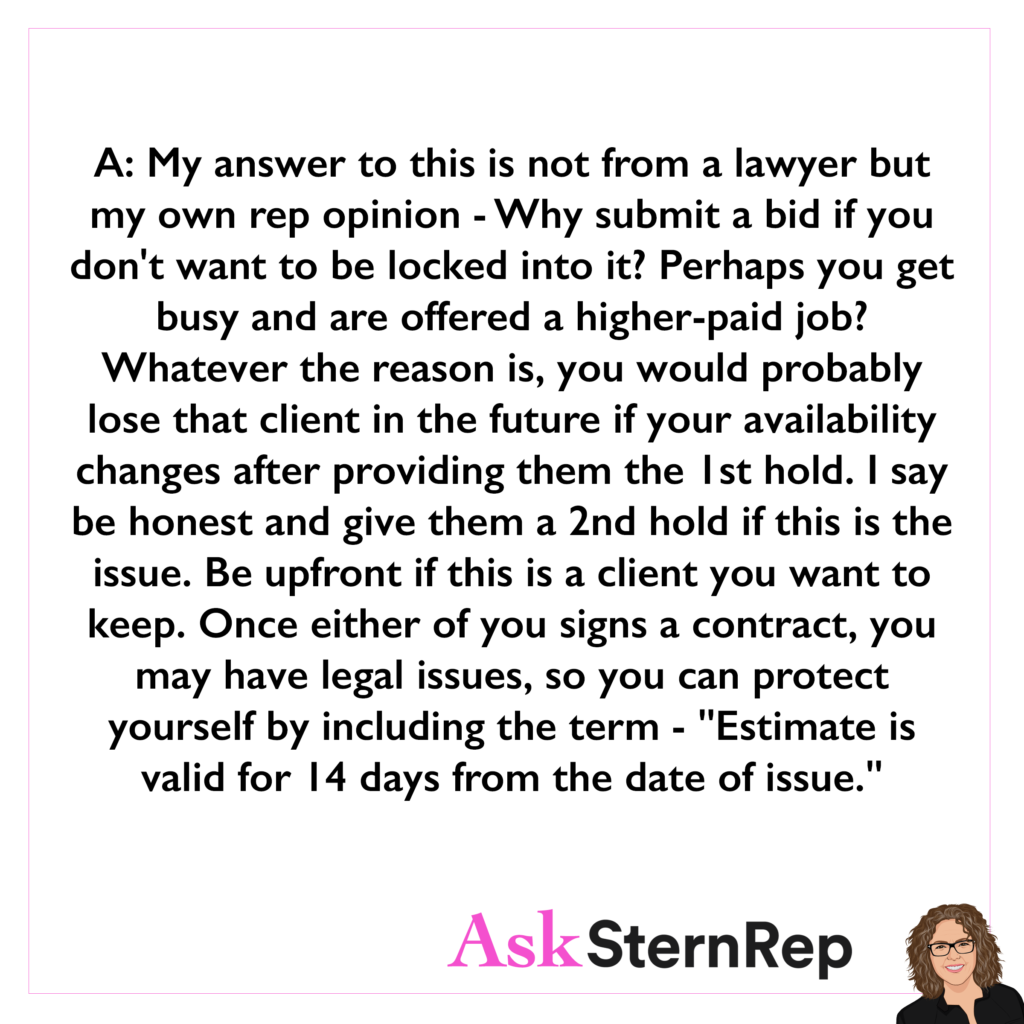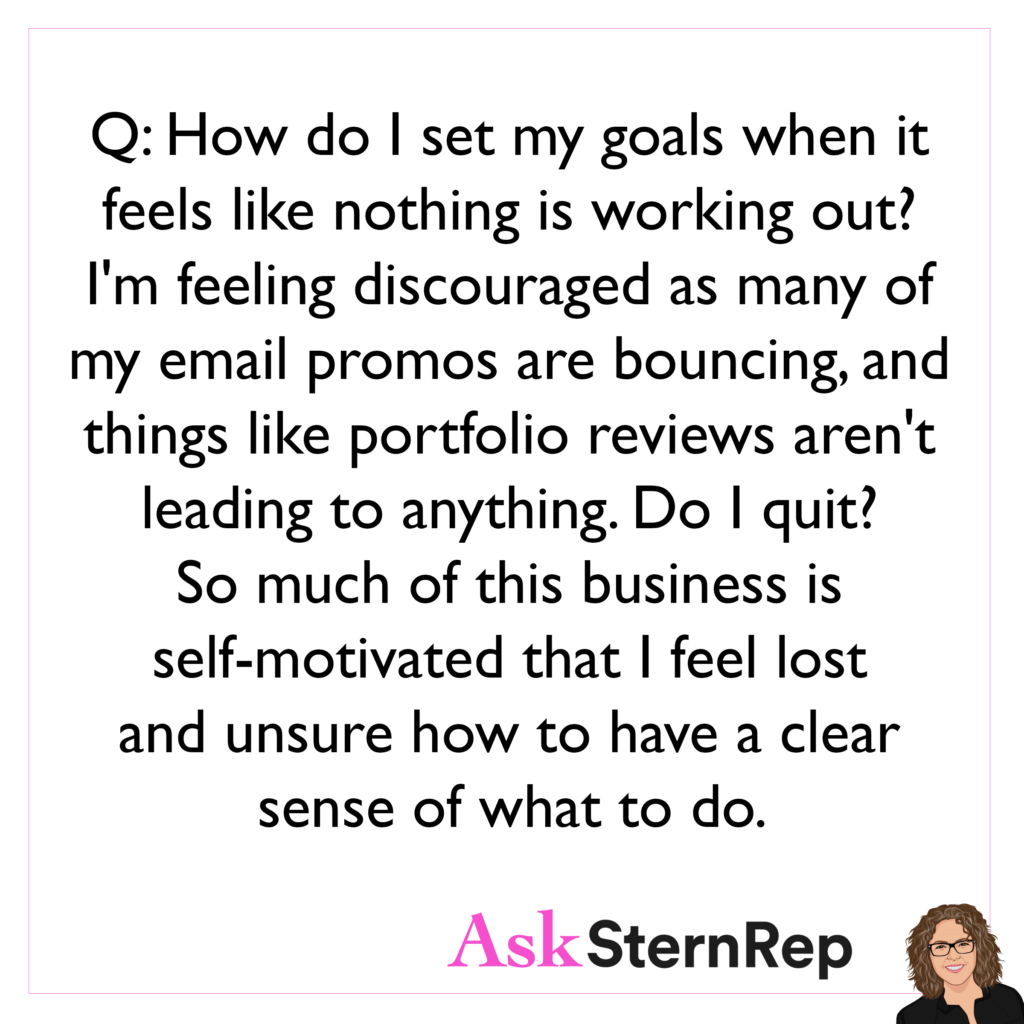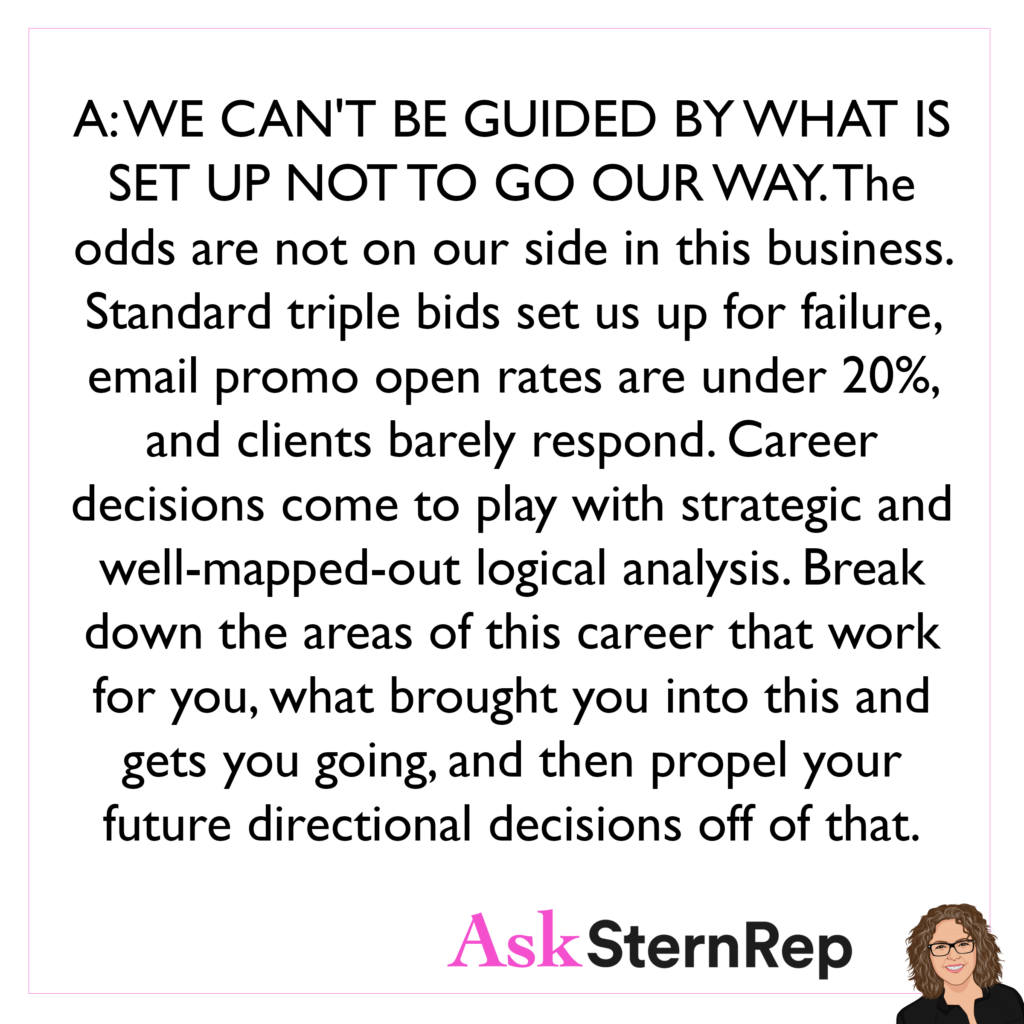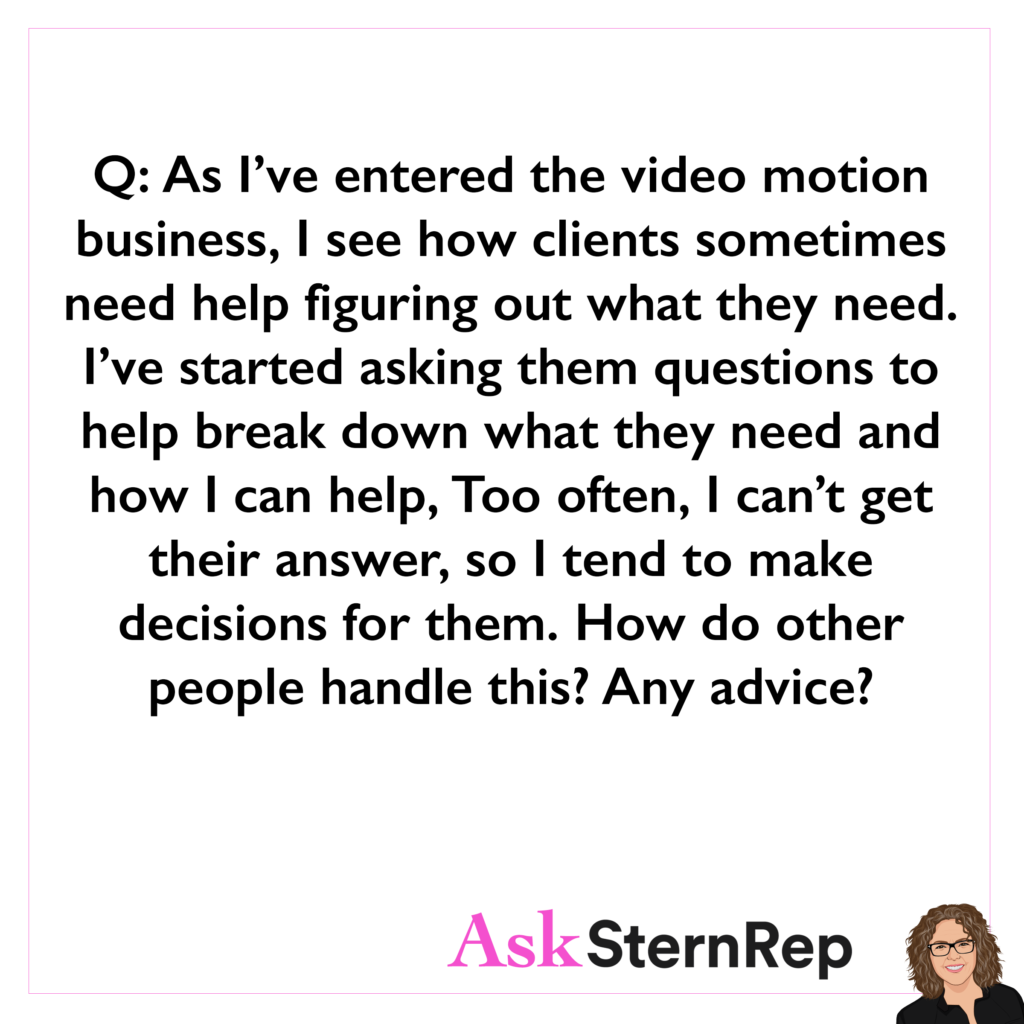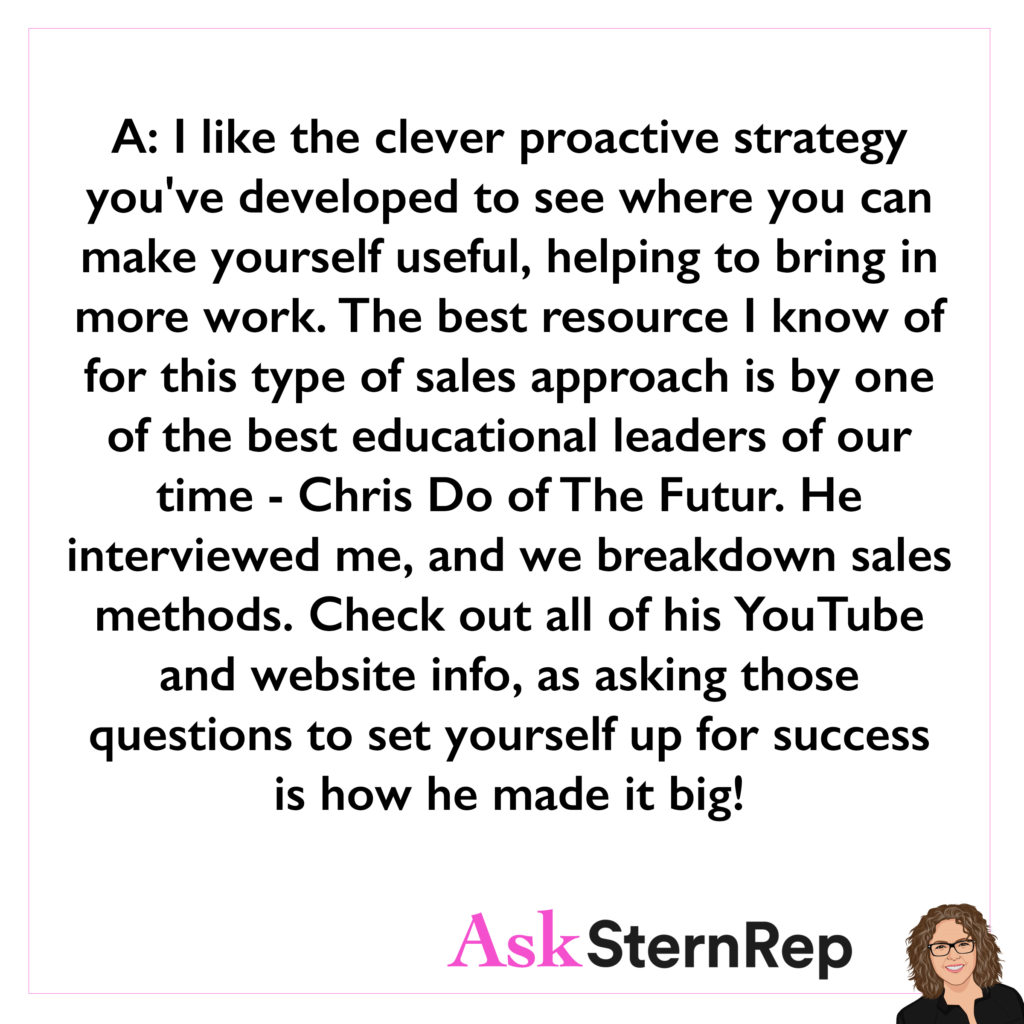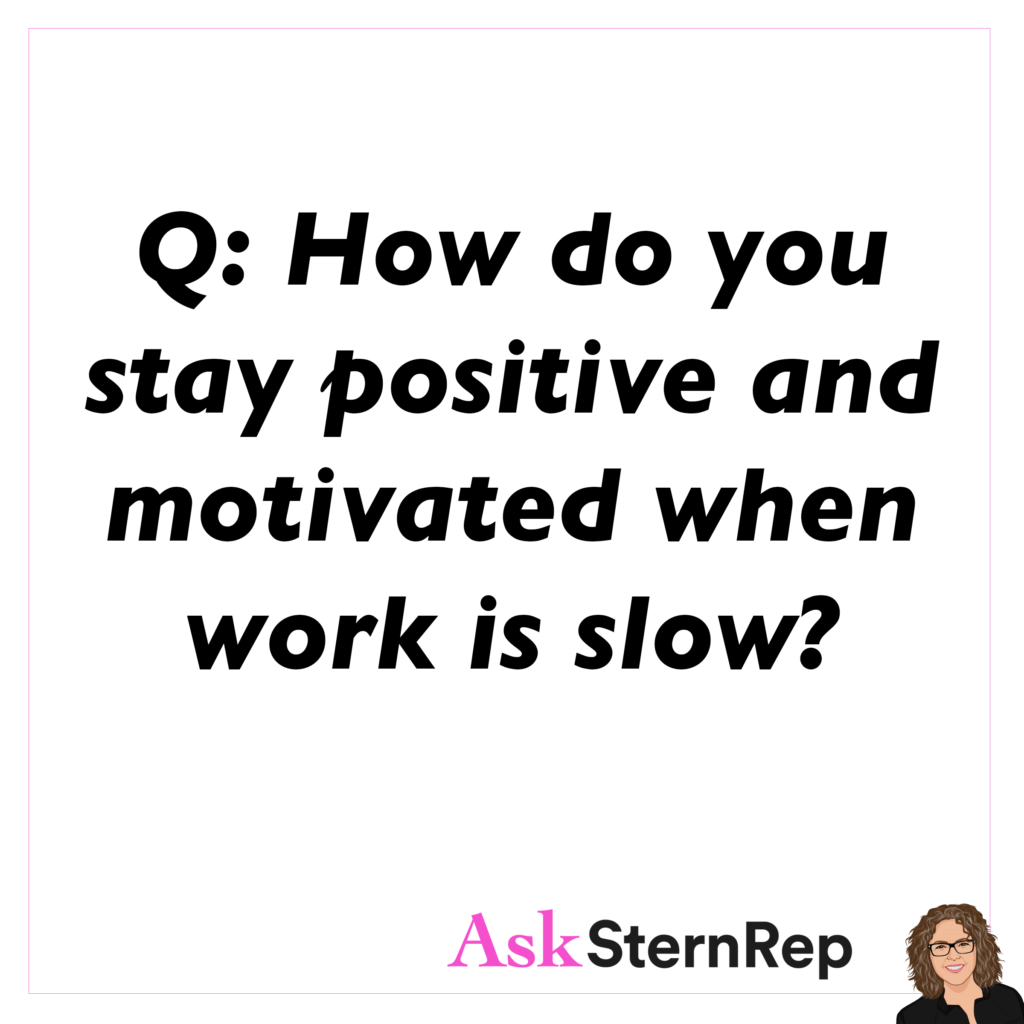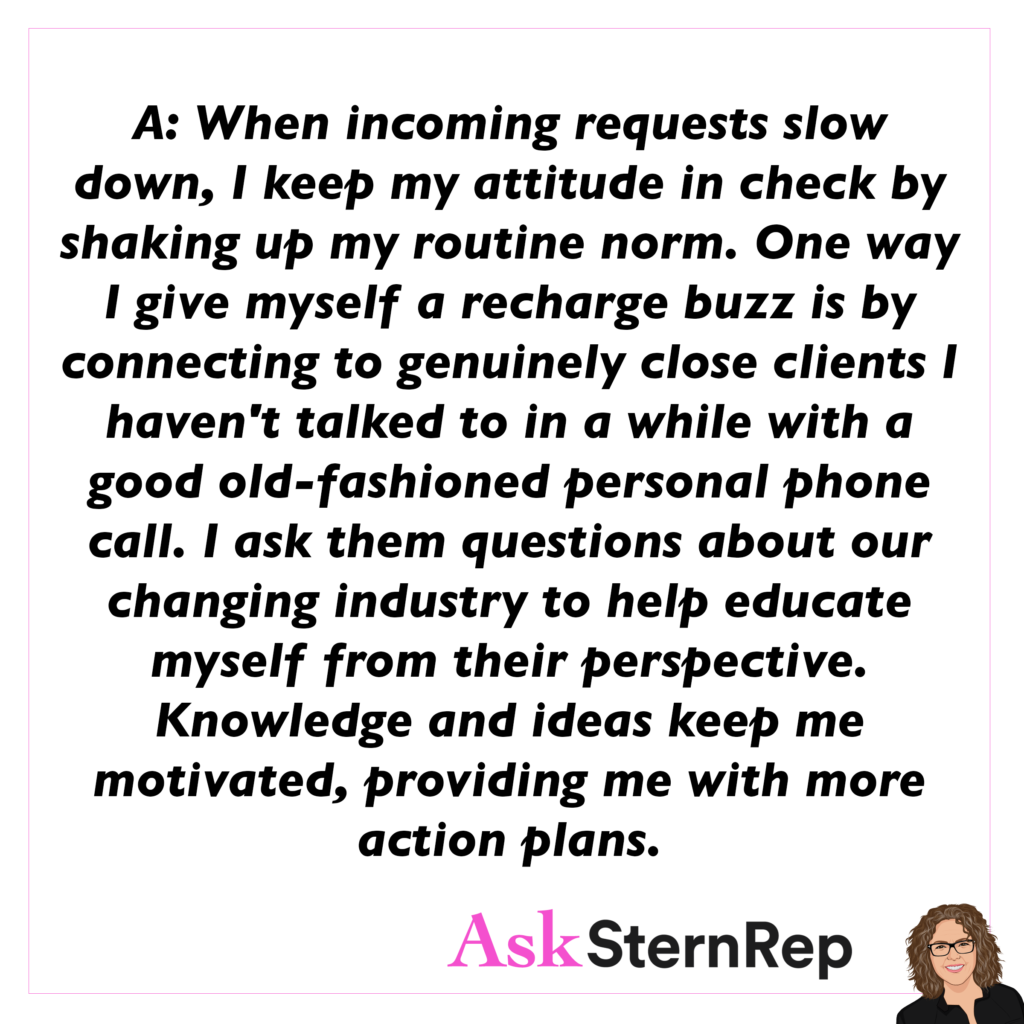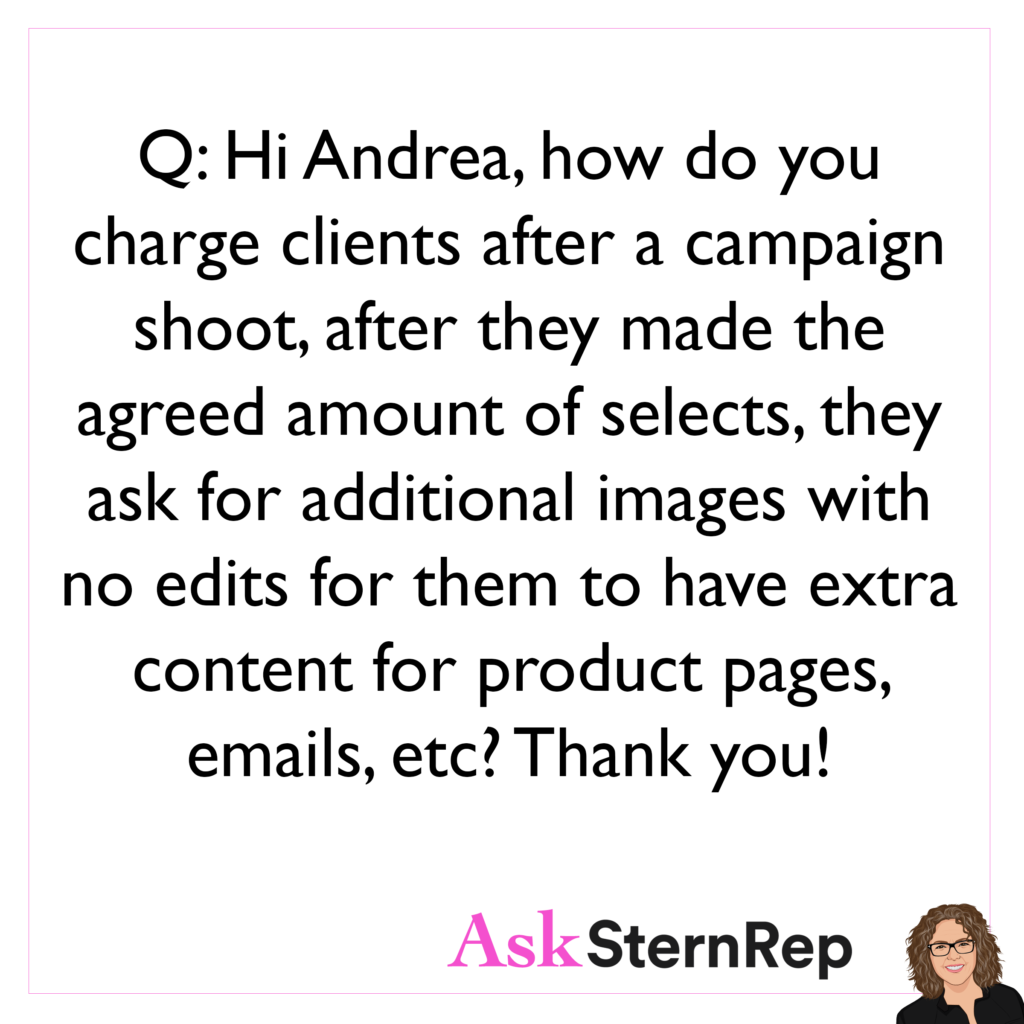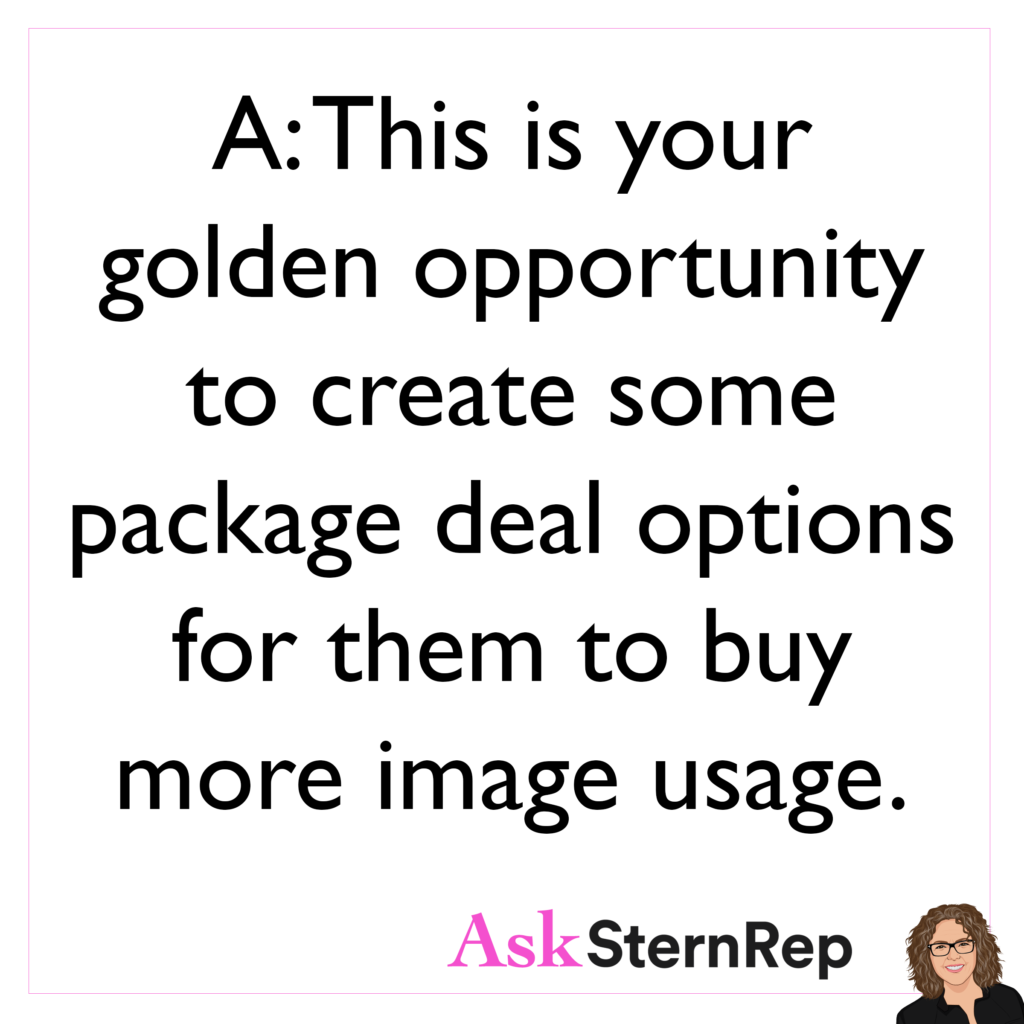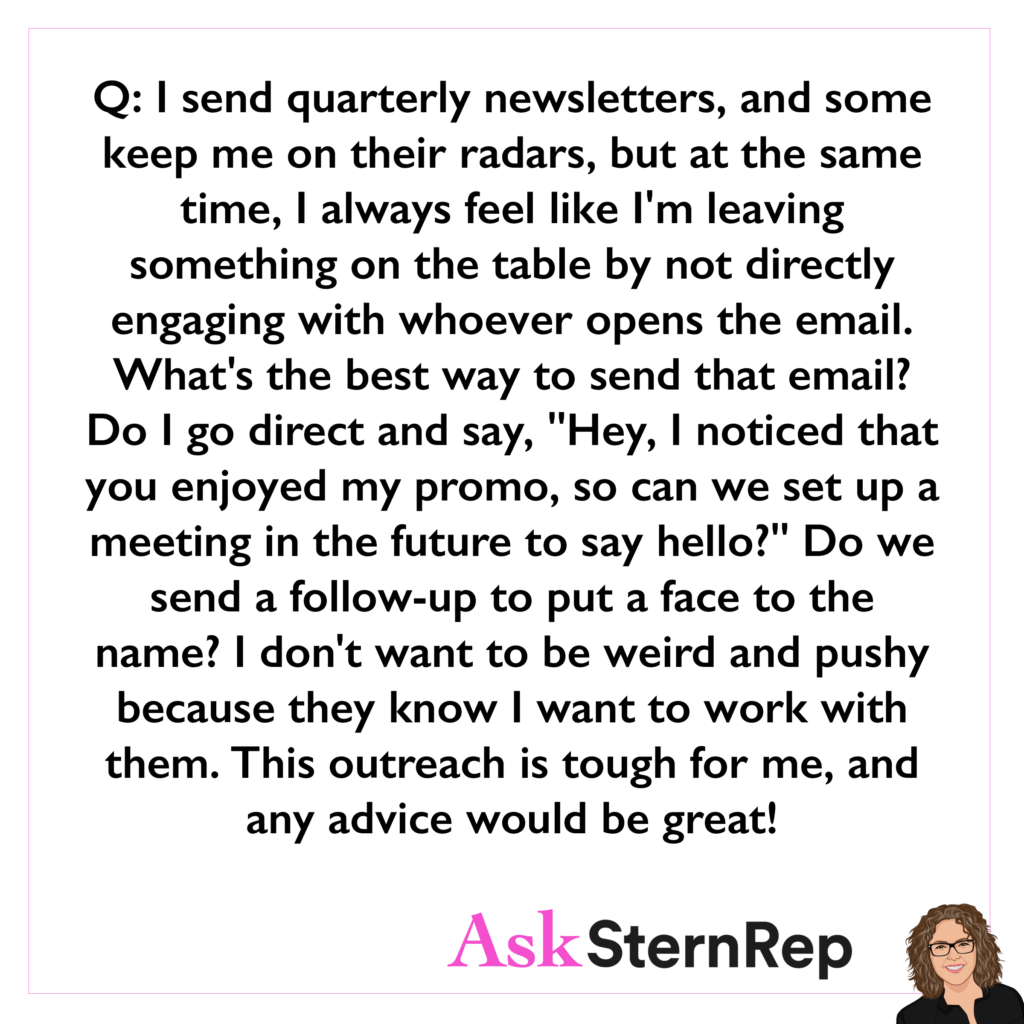
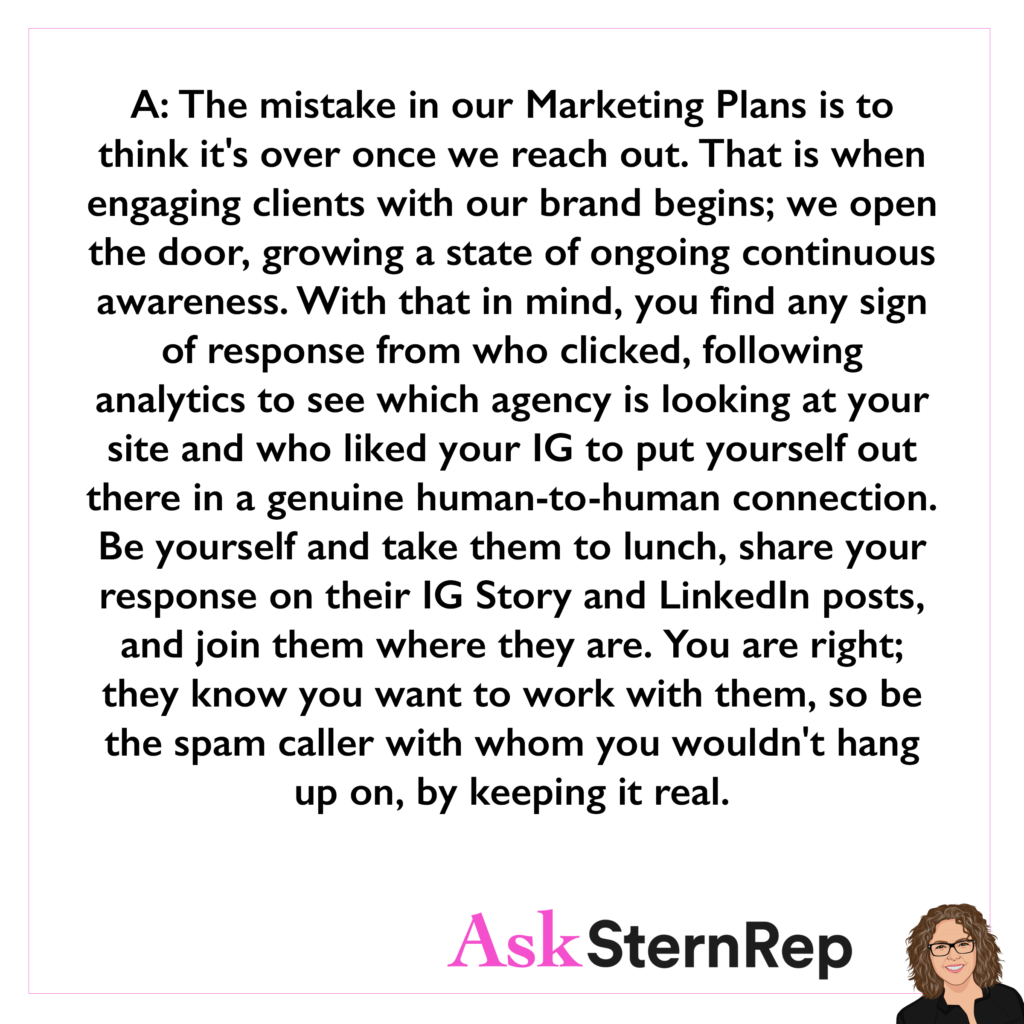
Q:
I send quarterly newsletters, and some keep me on their radars, but at the same time, I always feel like I’m leaving something on the table by not directly engaging with whoever opens the email. What’s the best way to send that email? Do I go direct and say, “Hey, I noticed that you enjoyed my promo, so can we set up a meeting in the future to say hello?” Do we send a follow-up to put a face to the name? I don’t want to be weird and pushy because they know I want to work with them. This outreach is tough for me, and any advice would be great!
A:
The mistake in our Marketing Plans is to think it’s over once we reach out. That is when engaging clients with our brand begins; we open the door, growing a state of ongoing continuous awareness. With that in mind, you find any sign of response from who clicked, following analytics to see which agency is looking at your site and who liked your IG to put yourself out there in a genuine human-to-human connection. Be yourself and take them to lunch, share your response on their IG Story and LinkedIn posts, and join them where they are. You are right; they know you want to work with them, so be the spam caller with whom you wouldn’t hang up on by keeping it real.

